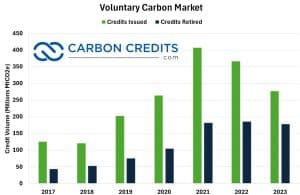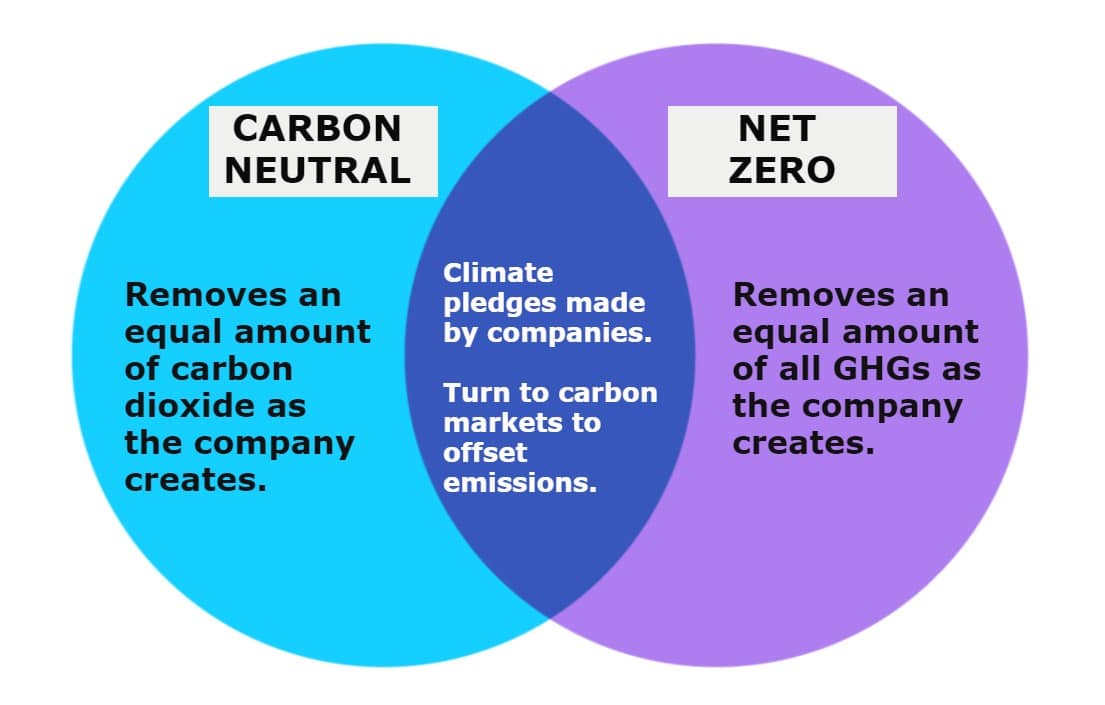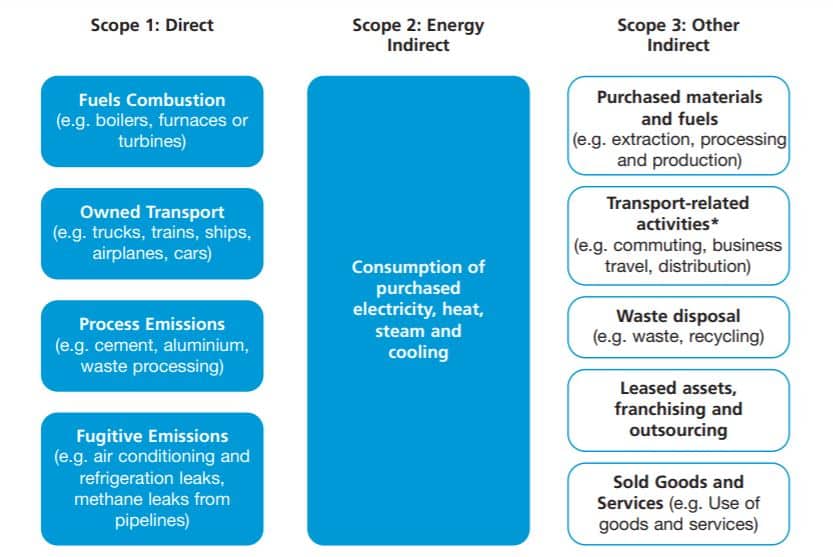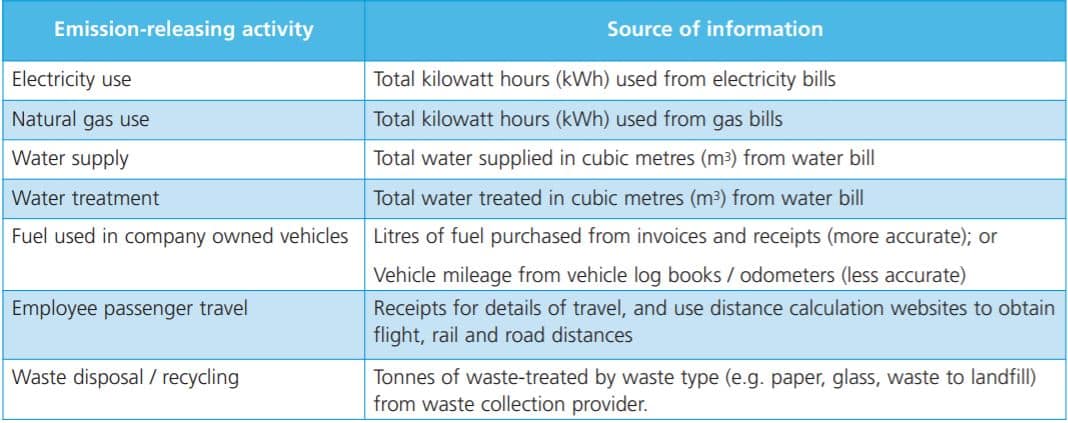Carbon neutrality vs. net zero – are they one and the same? No, they’re not, but both are popular climate pledges made by organizations around the world.
A new wave of climate commitments from different companies across various sectors is surfacing. This prompts the need to differentiate and clarify what it means to be carbon neutral or net zero.
These terms are often used interchangeably – using one to really mean the other. So knowing and understanding the major differences between carbon neutral and net zero is crucial in making correct climate pledges.
If you want to know how to achieve carbon neutrality for your business or non-profit, what steps to make or measures to use to get there, this article will guide you out.
Carbon Neutrality vs. Net Zero: The Key Differences
Before we spell out their differences, let’s first cite their similarities. Net zero and carbon neutrality are a form of climate commitment made by business companies and government organizations.
Each is a noble pledge with the same goal: to balance out the release of harmful gasses into the atmosphere.
What makes them different is the type of gas they target and the scope they cover.
Carbon neutrality specifically focuses on neutralizing an entity’s carbon dioxide (CO2) emissions. Being carbon neutral means your business operations’ emissions are compensated through CO2 reduction or removal initiatives.
On the other hand, net zero solutions tackle all greenhouse gas (GHG) emissions, not just CO2.
Other potent GHGs include methane, nitrous oxide, and fluorinated gas emissions, among others. But they’re all expressed in tonnes of carbon dioxide equivalent or CO2e as the common measurement unit in carbon accounting.
More importantly, achieving carbon neutrality is much easier than reaching net zero. That’s because you can opt to compensate or offset your carbon footprint without actually reducing CO2 emissions but by funding CO2 reduction or removal projects.
The amount of CO2 the project avoids or removes must be equivalent to the amount your business operations pollute. In other words, if your company emits about 80 tonnes of CO2 annually, you have to pay for the same amount of carbon offsets.
While you can do that to achieve carbon neutrality, it’s not the case with meeting net zero emissions.
The scope of net zero is much broader and it’s harder to achieve. You need to account for all of the GHGs your company emits.
The Science Based Targets Initiative’s (SBTi) corporate Net Zero Standard formally set the definition of net zero and provided guidelines for companies on how to achieve it. Under this standard, carbon offsetting to compensate for GHG emissions should be the last resort.
Polluters must first reduce their emissions meaningfully through various means. These can include improving the energy efficiency of operations or processes, using renewables, electrification, and more.
In short, net zero goes beyond carbon neutrality; it’s a race calling for more drastic solutions to reduce GHG emissions. To know more about net zero, this full article explains what net zero is all about.
Net zero is a movement in addressing global warming while carbon neutrality is a narrower climate solution.
Yet, that doesn’t mean being carbon neutral is less important. In fact, it’s a good starting point for businesses to manage their carbon footprint and help in the fight against climate change.
So, what does achieving carbon neutrality mean for your company?
Being carbon neutral doesn’t necessarily mean your operations will result in zero emissions. But it does mean that you choose to join the race to net zero, run your company with a lighter CO2 footprint, and be sustainable.
Let’s get down to the details.
The First Steps in Achieving Carbon Neutrality
Carbon neutrality vs. net zero is not always a case of comparison. Reaching net zero may also involve the use of carbon offsets, as is the case in achieving carbon neutrality.
But before we dwell on this element of neutralizing your emissions, you must first know the basic steps involved.
Calculating Your Carbon Emissions
The first step to being carbon neutral is getting how much CO2 your company emits. That would serve as a baseline. This process is also known as carbon accounting or GHG emissions accounting.
Public traded companies, especially the big ones, are required to disclose their carbon emissions and report them properly.
The gold standard in accounting for corporate carbon emissions is the Greenhouse Gas Protocol or GHG Protocol. It’s an international framework that puts numbers on a company’s business activity.
This means you should identify activities that your firm does that release CO2. The more complex the structure of your company, the more difficult it is to identify the sources of emissions. But most often, doing it involves quantifying emissions based on three scopes – Scope 1, Scope 2, and Scope 3.
The following diagram shows the common emissions sources under each scope.
The most common method used to calculate carbon emissions is to apply emission factors to activity data from your company. It means getting the quantity of resource use through receipts, invoices, or bills associated with the activities.
For instance, calculate the amount of electricity, fuels, goods, and services you paid for. The table below shows common polluting activities and sources of information to turn the data into carbon emissions.
To know more about carbon accounting, here’s a detailed guide for that. While for quantifying CO2-polluting activities, here’s a comprehensive guide to refer to.
Once you have established your CO2 footprint baseline, you can now move on to the next step – laying out a plan on how to neutralize emissions. There are many means to that.
As mentioned earlier, you can opt to shift to renewable energy sources to reduce CO2 emissions. Or you may improve the efficiency of your business processes.
And if you want to provide potential income to others, you can help fund environmental projects through carbon offset credits.
Examples of leading companies that have an SBTi-approved carbon neutral pledge are: Apple by 2030, Delta Airlines by 2030, and BP by 2050.
Though the specific levers or measures these companies adopt vary, one common denominator they share is the use of carbon offsets in achieving their climate targets.
So, how can you achieve your own carbon neutrality targets through carbon offsets?
How To Achieve Carbon Neutrality
Using carbon offsets generally known as carbon credits applies to reaching both carbon neutrality and net zero goals. These credits are traded on carbon markets, each credit representing a tonne of carbon reduced or removed.
Carbon offsets are traded on voluntary carbon markets that serve an important role in supporting corporate emission reduction efforts. Though the SBTi strongly recommends that polluters should limit reliance on offsetting programs as one of their climate actions, not all emissions can be eliminated immediately or through direct reduction measures.
This is where carbon markets become part of the solution for unabated carbon emissions. These markets are particularly vital for compensating emissions that companies can’t eliminate even after performing substantial reduction initiatives internally.
The Role of Carbon Offsets in Achieving Carbon Neutrality (and Net Zero)
The goal of carbon offsetting is to neutralize hard-to-abate emissions by removing CO2 from the atmosphere. The idea behind the concept is that a unit of CO2 released by your entity’s activities can be offset by sequestering an equal amount of carbon from somewhere else.
Ever since offsetting was launched in carbon markets, more and more corporations are supporting offset projects with high hopes that these initiatives help them abate their footprint. And indeed their big investments continue to propel the market to grow immensely in recent years.
As seen in the chart from Katusa Research, offsets issued reached about 300 million in 2021. And as global efforts to shift to sustainable practices to hit net zero intensify, demand for carbon offset credits will also grow.
Based on industry estimates, annual global demand can go up to 2.0 gigatons of CO2 by 2030 and 13 GtCO2 by 2050. That also means the market size can be between $30 billion and $50 billion by the end of the decade, depending on various factors.

Some are into protecting ecosystems like afforestation of new, or reforestation of degraded land. Others include developing or deploying clean energy technologies or renewables.
Carbon offset projects vary widely when it comes to cost. But the offset credits they generate serve the same purpose: to neutralize an entity’s carbon footprint.
Both companies and individuals can use carbon offset programs to look for the right offset project to invest in. These programs offer different carbon offset projects that you can select to support.
So, how do you know which is the best carbon offset program that can compensate for your business’ carbon footprint? That depends on a couple of things such as the type of project you want to support, the quality of the offset, and so on.
But one important criterion to consider is third-party verification which is crucial to validate that the offsetting project is actually reducing the emissions you need to neutralize. And of course, it pays to select projects that follow high social and environmental integrity standards.
Only after retiring the offsets that your company can claim their environmental impacts. Retirement means removing the credits from the market. They shouldn’t be traded anymore as they must count only once towards carbon neutrality or net zero claims.
If you want to learn more about how carbon offsetting works as well as what are the top programs to consider, go over this complete guide.
In summary, here are the key steps you should keep in mind:
- Understand your organization’s carbon footprint
- Calculate current carbon footprint to set a baseline
- Define targets and goals for offsetting and reductions
- Verify offsets of emissions
- Establish a consistent monitoring, verification, and reporting system
Why Having a Carbon Neutrality Goal is Crucial?
Creating a carbon neutral or net zero goal is a great way to fight climate change on a collective level.
When a popular brand takes a stance against carbon pollution, it inspires other brands or companies to follow suit.
Not to mention that it also attracts large investors and celebrities like the case of this first carbon neutral food company.
Neutral Foods was able to attract the likes of Bill Gates and plenty of celebs such as Mark Cuban, LeBron James, John Legend, among others. The company tracks carbon emissions from dairy farms they’re sourcing milk and buys carbon offset credits to neutralize their footprint. They work with farmers to help them cut their own emissions at the source.
Moreover, pledging carbon net neutrality, more so net zero, is a way to practice responsible carbon accounting regularly. This, in turn, enhances climate action awareness and sustainable responsibility at the corporate level or among company leaders.
Taking steps for being accountable for carbon emissions is a good starting point for companies to strengthen their sustainable policies.
Most importantly, offsetting CO2 emissions is one option for companies or sectors that can’t fully decarbonize their operations.
Ideally, your carbon neutrality goals must be flexible enough to consider new technology that can promote climate actions. They must be measurable, attainable, and sustainable within the timeframe set. This can be validated by getting a carbon neutral certification.
If possible, going beyond carbon net neutral is even more desirable. That means your company is operating not just at a neutral but climate positive footprint. This goes beyond the carbon neutrality vs. net zero debate.
Being a climate positive entity means removing additional CO2 emissions outside of your firm’s value chain. In other words, you’re championing climate actions that eliminate more carbon than your company operations emit.
Achieve Carbon Neutrality for Sustainability
The takeaway? Carbon neutrality vs. net zero is similar in a sense that they both tackle the climate crisis, prompting actions that reduce harmful emissions. But they’re not the same in a way that they target different emissions and their scope varies.
To be carbon neutral means balancing out carbon dioxide emissions of your company’s or organization’s operations. To hit net zero emissions requires more massive climate efforts that may involve both reducing and offsetting emissions.
Either way, achieving any of these climate goals often calls for getting through large amounts of emissions data, brainstorming reports with stakeholders, and making some changes in your entire operations.
Achieving carbon neutrality, in particular, is a good way to chart your climate action and sustainability plan.
The first step to that is calculating your company’s current carbon emissions. From there, you can build out an effective plan of action geared toward reducing your CO2 footprint. Plus, you can also slash your other greenhouse gas emissions in the process.





